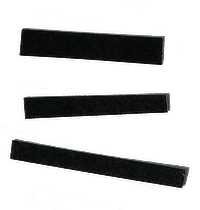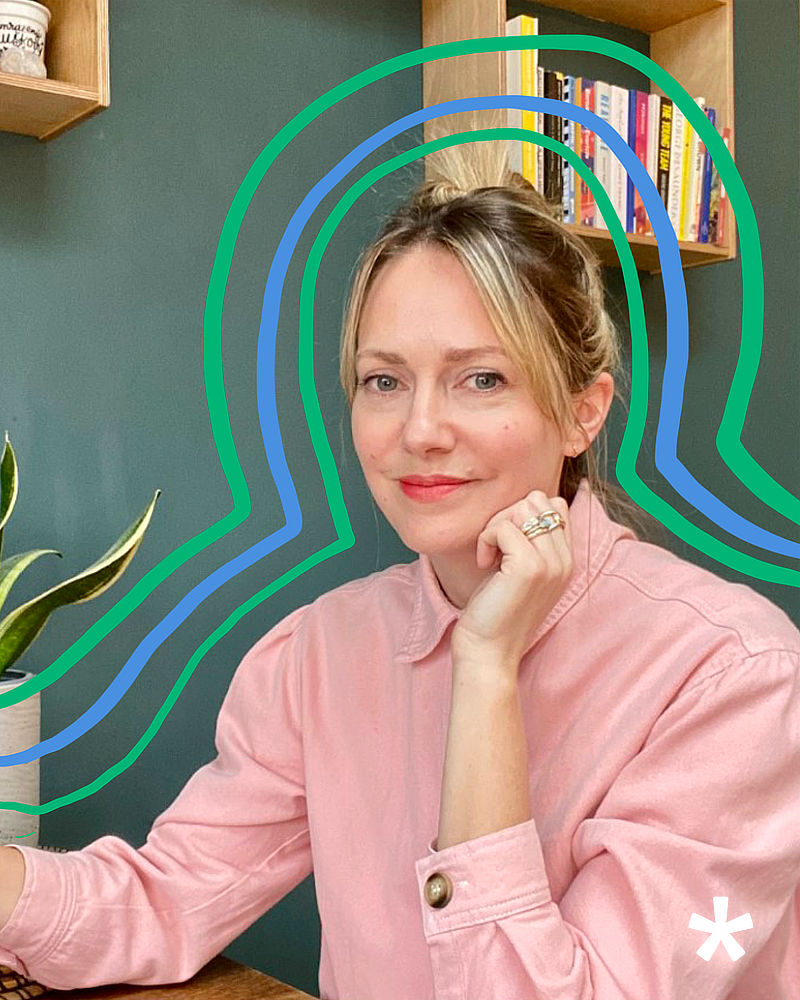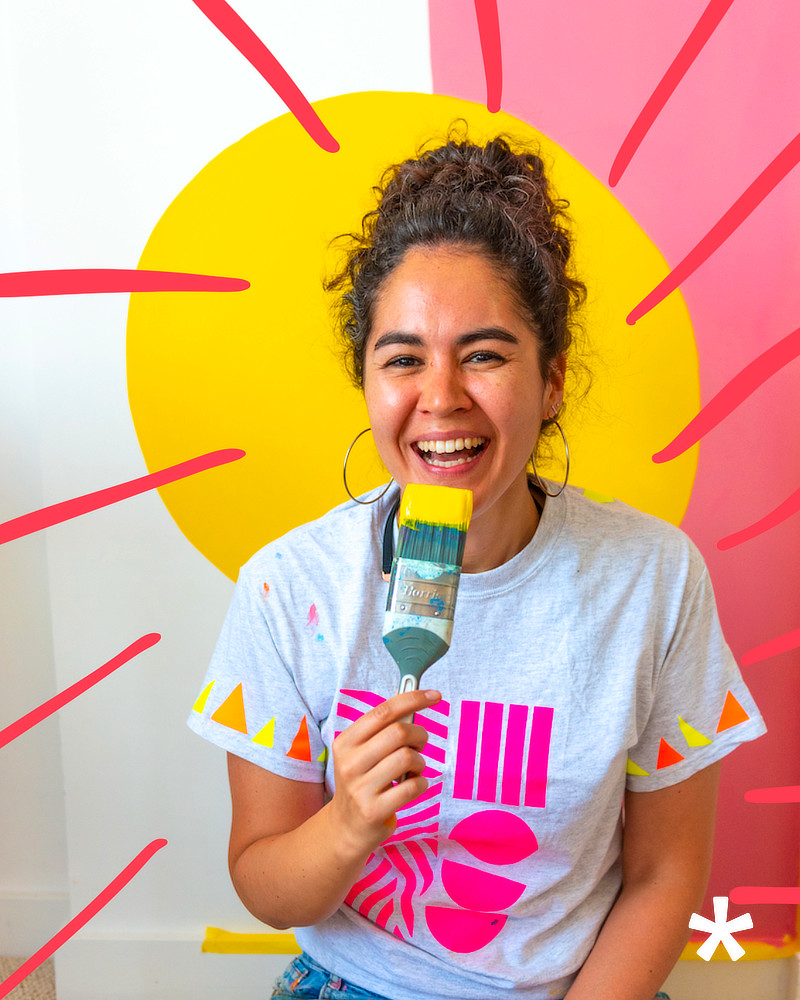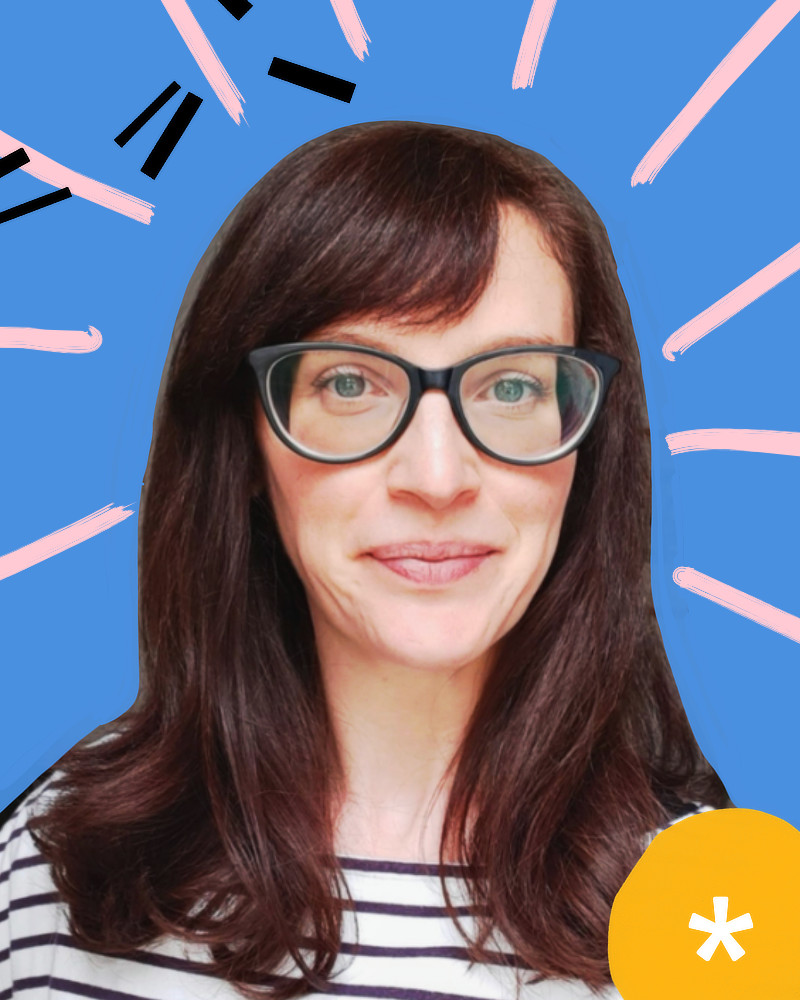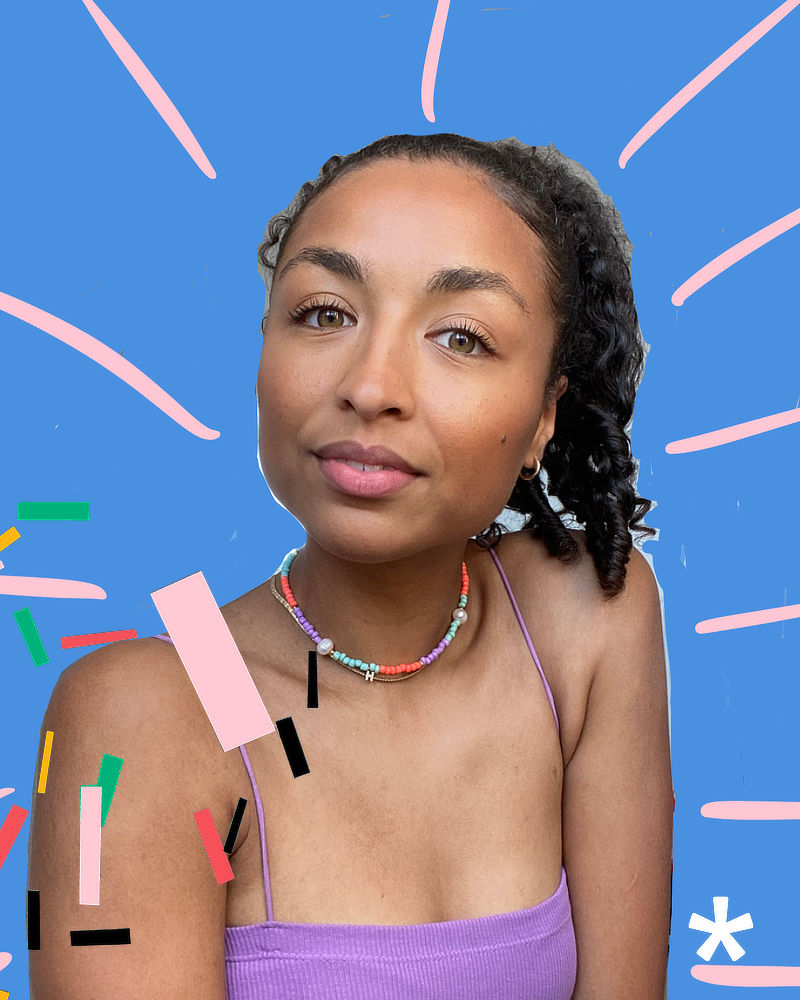Describing herself as a “maximalist fighting with a minimalist” Leo Taylor’s words are as delightful as her artwork. A London-based writer and artist, Leo works under the name Ordinary Shapes. Needing a creative outlet to help her feel more like herself, Leo fell in love with collaging while on maternity leave. Unsurprisingly, words play a significant role in Leo’s artwork. Playful and colourful, inspired by snippets of conversation and found materials, Leo now works professionally as both an artist and copywriter. In this interview with Leo, I find out about her journey into both careers, where the name Ordinary Shapes comes from and how building an audience helped her feel more at ease selling her artwork. Leo also shares her pro writing tips for anyone who’s wearing all the hats in their business.
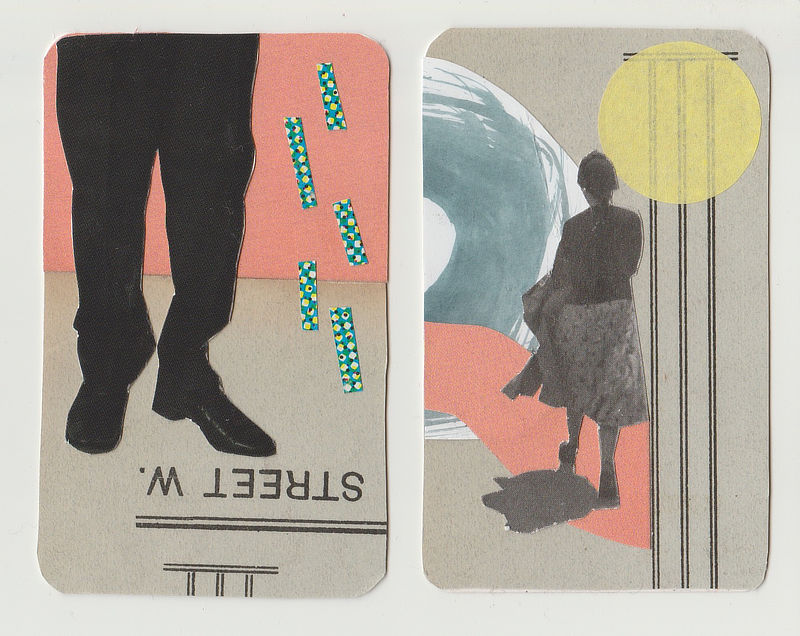
I’m engaged in an internal struggle between minimalism and maximalism! There’s often some naivety and humour in my work too.
How would you describe your aesthetic?
I like the contrast of bold shapes and lines with ephemeral materials and muted colours. Colour is really important to me. My style is often graphic and flat but sometimes painterly qualities sneak in. I like text. And it’s very contingent too because it partly depends on what I have to hand and what my eye falls on at the time. I’ve found myself using fewer pinks and more faded tans and browns in autumn and winter. I’m engaged in an internal struggle between minimalism and maximalism! There’s often some naivety and humour in my work too.
Can you tell me about your background?
My employment background is in publicity and communications in education and book publishing. And my educational background is in art and literature. I worked for a long time with academics and authors. I enjoy being around books and ideas but I also need the visual, more intuitive side. Although my parents probably wouldn’t describe themselves as creative, they are. My dad is a talented woodworker and my mum made some incredible clothes in the seventies. My grandparents painted and wrote and sang and performed too. None of them professionally but they all found an outlet. I grew up in the countryside but have been in London for near enough 20 years. I live with my husband, a crossword fanatic, and our two young children.
According to your Instagram bio, you’re a writer by day and a collage artist by night. Can you tell me how this came about?
Well, recently I’ve been collaging in daylight too. But I started working with collage when I was full time employed in a corporate job, on my second maternity leave and looking for a creative project. I decided to make it a habit to make and share something, anything really. I felt like I wasn’t quite myself and I needed to get back to a place where I felt more like me. The pandemic definitely played a part. So I began an Instagram account and found some art challenges and got over the initial ick of sharing work publicly. Now I work part-time for an agency and write freelance for small businesses and organisations. I also spend more time with my young daughters and work on my art and illustration most days. I love the variety but I miss having colleagues, the financial freedom a corporate salary allows, and walking along the Thames at dusk.

You use the alias of Ordinary Shapes for your art practice. Can you tell me a little bit more about this, and how you came up with it?
I enjoy words and inventing names for things. I have a long list of words that I think sound good together in a notebook. Frequently, collage is a surreal or nostalgic medium and I think, subconsciously, I wanted to stand out from that. I find quite ordinary things beautiful. I have many photos on my phone of very pedestrian, everyday things that have caught my eye for one reason or another. I also write in a straightforward way. I like the alchemy of making something striking from ordinary shapes, or indeed words.
You’ve started selling your artwork in 2022. Have you always been confident about selling your work or was this something you’ve been working towards?
I wouldn’t say I’m confident about selling it but I can understand that some people might like it and want to own it, which I wouldn’t have thought a couple of years ago. It’s partly down to positive feedback and partly because I like and buy things from other people in a similar way. I’ve yet to do anything like a sustained campaign to sell work but I think that I’ll feel good about it when the time comes. The idea of selling feels more natural and comfortable when you’ve found an audience. If I had to cold call someone to flog them a print with no insight into their taste then I would fail miserably – but making work available to a receptive audience feels very different.
As a professional writer, do you have any writing tips for someone doing it all themselves?
Writing about yourself or your brand can be so hard. My top tip for small business owners is to draft whatever you need to say in an email as if you were writing to a friend. You can get very caught up in personas and who your ideal customer is but try writing in an informal, friendly and open way as if you’re writing to a pal, first off. We’re all human beings who want to understand or feel something. There’s plenty of time to be clever and witty later – don’t worry about that in your first few drafts. And then try recording yourself talking about the subject. Have a chat to your phone and see what comes out. There might be some idea or wording that surfaces that you can run with. Another tip is to have your files available on your phone, your laptop, your tablet, everywhere – so if inspiration strikes at the bus stop you can quickly make a note to come back to later.

One way I continue to make is by allowing myself to think big but also small. Holding the two ambitions in mind and seeing them as complementary means that I am moving small elements of my life into a greater whole on a continuum.
A creative practice takes work, whether it’s writing or art. What are some of the things you do to stay motivated and inspired?
It does take work. One way I continue to make is by allowing myself to think big but also small. Holding the two ambitions in mind and seeing them as complementary means that I am moving small elements of my life into a greater whole on a continuum. That all sounds quite philosophical but what I mean is that by allowing myself to think and make in a small way I continue to make. I don’t stop. And nothing new happens if you stop. I’ve learnt to recognise that there are days when work, creative or otherwise, is not going to be possible. Those are the days I need to focus on looking after ill children or getting the sink unblocked. I feel very grateful for friends I have online and offline for sharing ideas and their ups and downs. In particular, I’m part of a small informal group of women who, like me, are balancing their creative practice with life’s various demands. I check in with them often.
Can you tell me about a failure, and what you learnt from it?
I’m possibly not very good at failing. I don’t like to do it. I listen in awe to the guests on the How To Fail podcast. My daughter, who is learning to read, whispered to me the other day ‘Mummy, what if I get a word wrong?’ I told her that if that happens it doesn’t matter because that’s what learning is and she can just try again. At one point I wanted to do a PhD after my Master’s. I’ve yet to start it, so maybe that’s a failure.
Who or what inspires you?
So many things. Sometimes just a line on a page or two colours together. I really enjoy listening to other people talking about their lives, personal projects and creative work. Everyday people and places. Novels too. And podcasts – I like Literary Friction, Conversations of Inspiration, and The Jealous Curator.

Small things add up, so try not to overthink it. A tiny start is better than no start, whether it’s a personal project or a business idea.
What advice would you give to someone just starting on their journey?
Just start! Small things add up, so try not to overthink it. A tiny start is better than no start, whether it’s a personal project or a business idea. And be completely yourself, you may as well, you don’t have to answer to anyone and it’s what makes you unique. Plus it’s more fun and sustainable. Make a plan, yes, and ensure you can meet all your basic needs – but don’t get stuck at the planning stage. Start heading in even vaguely the direction you want to go and little by little things will become clearer and you’ll find your way. So start small while at the same time holding space for bigger dreams and aspirations.
What’s next for you?
I’m preparing for the Artist Open House in May. My ‘house’ will be Peace + Riot, a workspace with childcare in SE London. It’s the first time I’ve done an event with a focus on my making, so that’ll be fun and a learning curve too. I have a very special commission that I’m working on for next year and project work with an agency. I also want to develop my creative writing – I have yet to share any publicly! You won’t be surprised to learn that I’m planning on starting small.

